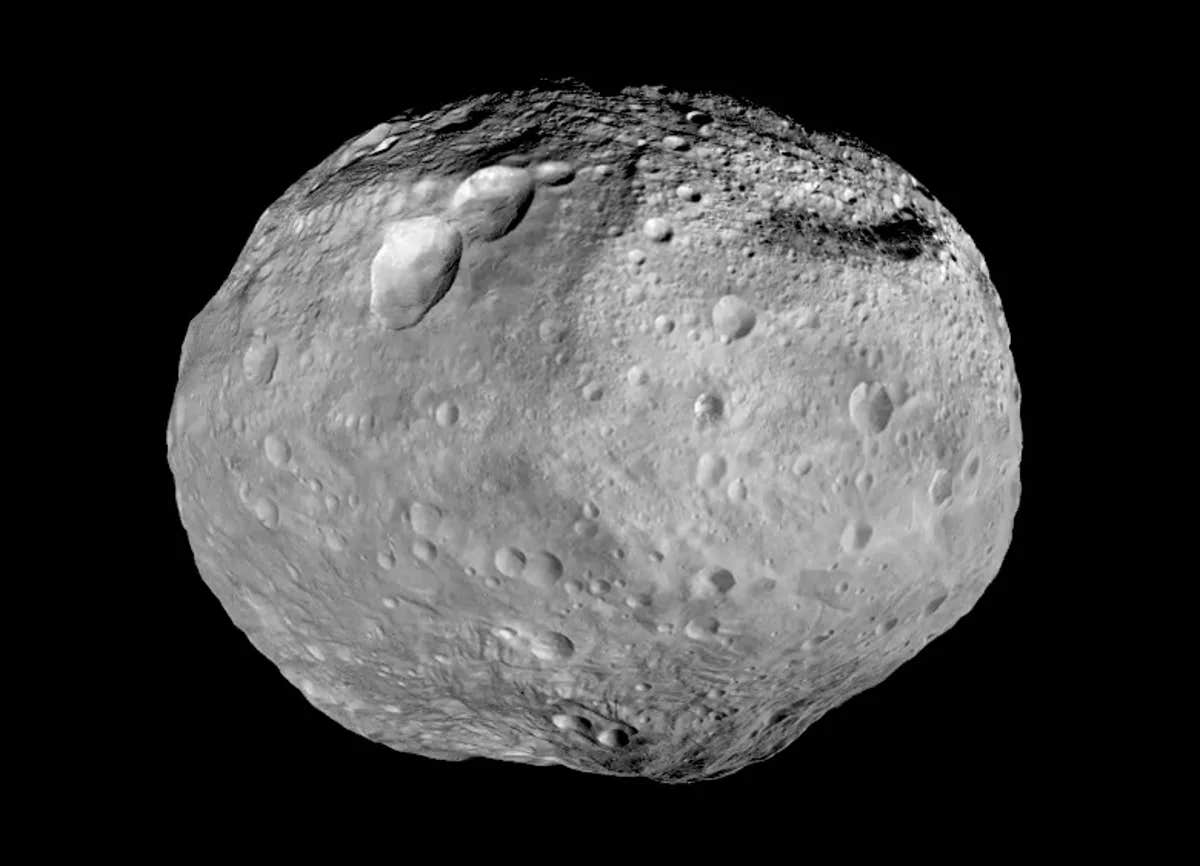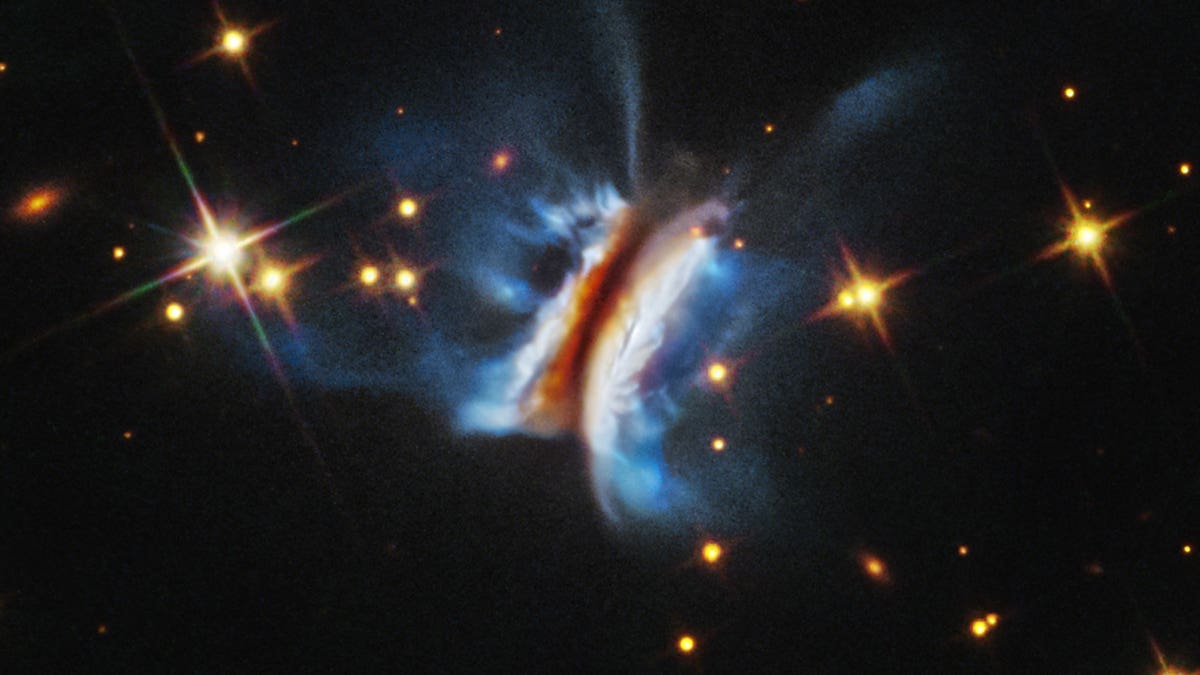Vesta might be much more than an asteroid, astronomers find
Vesta is still one of the largest objects in the asteroid belt, but its interior may not be what scientists expected.

New research on Vesta’s internal structure challenges long-held ideas about early planet formation, pointing to a more violent and complex past. (CREDIT: NASA)
For years, astronomers treated Vesta as more than just an asteroid. With its rocky surface, distinct layers, and volcanic history, it seemed to be a miniature version of Earth—something between a rock in space and a full-fledged planet. But new research is shaking up that view.
Vesta is still one of the largest objects in the asteroid belt, but its interior may not be what scientists expected. Data collected from NASA’s Dawn spacecraft and re-analyzed years later is rewriting what we know about how early planets may have formed—and what might have gone wrong in the case of Vesta.
Vesta's Core Mystery
Back in 2007, NASA launched the Dawn spacecraft to study the two largest bodies in the asteroid belt: Vesta and Ceres. Dawn orbited Vesta from 2011 to 2012, mapping its surface, measuring gravity, and sending back high-resolution images. These images, along with radiometric data from the Deep Space Network, gave scientists an early idea of what Vesta looked like beneath the surface.
At first, the evidence suggested Vesta had gone through planetary differentiation. This is the process where the densest materials sink to the center, forming a core, while lighter materials form a mantle and crust. It’s how planets like Earth and Mars came to be. Vesta’s volcanic surface made it look like it had followed this same path.
But something wasn’t adding up. A decade after Dawn’s mission ended in 2018, researchers at the NASA Jet Propulsion Lab (JPL) decided to take a fresh look at the data using better calibration and updated processing tools. What they found challenged a long-held belief: Vesta may not have a core at all. “Our findings show Vesta’s history is far more complex than previously believed,” said Ryan Park, senior research scientist and principal engineer at JPL. “We were thrilled to confirm the data’s strength in revealing Vesta’s deep interior.”
Focus Keyphrase: Vesta's Internal Structure
By re-analyzing Dawn’s data, the team was able to make a more precise estimate of Vesta’s moment of inertia—a physics concept that reveals how mass is spread within a rotating body. It’s like figuring out how heavy a spinning top is on the inside without opening it.
Related Stories
- Astronomers and backyard enthusiasts work together to detect rare long-period exoplanet
- Real warp drives could exist in the next 100 years, researchers say
Assistant Professor Seth Jacobson of Michigan State University explained it with a simple image. Think of a figure skater on ice: when they pull their arms in, they spin faster. When they stretch their arms out, they slow down. That’s how moment of inertia works. Celestial bodies with dense cores behave like skaters with their arms in—they rotate differently.
Vesta’s behavior didn’t match what scientists expected from a core-bearing body. Its moment of inertia, calculated as only 6.6% lower than a perfectly uniform structure, suggests Vesta's internal structure is surprisingly even. The value points to only a mild difference in density beneath its crust, not the deep layering seen in fully differentiated planets.This new look at Vesta’s internal structure has forced scientists to rethink everything they thought they knew.
Two New Theories Take Shape
So, if Vesta doesn’t have a core, how did it form? Researchers are now exploring two main ideas. The first is that Vesta began to differentiate—its insides started to melt and separate into layers—but something interrupted the process. This could have been caused by a late start in forming or limited exposure to heat-producing elements like radioactive aluminum-26.
The second theory is more dramatic. It suggests that Vesta might be the shattered remnant of a much larger differentiated planet. That body could have been destroyed in a massive collision during the solar system’s early years. Vesta would then be just one of the reassembled pieces—chunky space debris from a growing world that never made it.
Jacobson had raised this idea years earlier during an astronomy conference. Back then, he thought the idea of Vesta as leftover planetary rubble was a stretch. Now, he’s not so sure. “This idea went from a somewhat silly suggestion to a hypothesis that we’re now taking seriously,” he said.
Meteorite Clues and Unsolved Questions
The mystery deepens when you consider Vesta’s meteorites. Over the years, researchers have collected thousands of space rocks on Earth believed to have come from Vesta. These meteorites look like they formed in a molten environment. They show signs of volcanic activity but don’t obviously suggest incomplete differentiation. “We’re really confident these meteorites came from Vesta,” said Jacobson. “And these don’t show obvious evidence of incomplete differentiation.”
That creates a problem for the first hypothesis. If Vesta only partially melted, the rocks should reflect that—but they don’t. The second idea, where Vesta is a remnant of a larger destroyed planet, might better explain the rocks. But it also raises new questions.
Jacobson’s lab is already exploring the idea that some asteroid belt objects are actually fragments from once-growing planets. He and graduate student Emily Elizondo are modeling what those collisions might have looked like and how debris like Vesta might have formed. The goal is to build better models that can show whether a planet-sized object could be broken apart in such a way, and whether the pieces would still resemble what we see in Vesta today.
A Planet That Never Was?
Vesta’s internal structure could hold the key to understanding how planets grow—or fail to. For a long time, Vesta seemed like a model protoplanet, the kind of object that started forming but didn’t quite make it. Now, that picture has become blurry.
Instead of being a failed planet, Vesta might be something even more interesting: a survivor of cosmic violence. If it truly is a chunk of a planet destroyed in the early solar system, it could tell scientists about collisions and processes that shaped the worlds we see today.
“No longer is the Vesta meteorite collection a sample of a body in space that failed to make it as a planet,” said Jacobson. “These could be pieces of an ancient planet before it grew to full completion. We just don’t know which planet that is yet.”
More studies are needed. Scientists want to use the updated Dawn data to look at other aspects of Vesta’s past. They also want to revisit how Vesta’s meteorites are studied in labs around the world. It’s a reminder that in science, answers often lead to more questions. And in space, what looks simple at first glance can hide a deep and tangled history.
What This Means for Planetary Science
The findings about Vesta’s internal structure don’t just change our understanding of one asteroid. They could reshape how researchers think about early planetary formation across the solar system.
Was Vesta’s lack of a core unusual, or is it part of a larger pattern? How common are these incomplete or fragmented worlds? Could other bodies in the asteroid belt tell similar stories? These questions are just beginning to be asked, thanks to data from a spacecraft that finished its mission years ago—and a team of researchers who decided to look at it in a new way.
Research findings are available online in the journal Nature Astronomy.
Note: The article above provided above by The Brighter Side of News.
Like these kind of feel good stories? Get The Brighter Side of News' newsletter.



